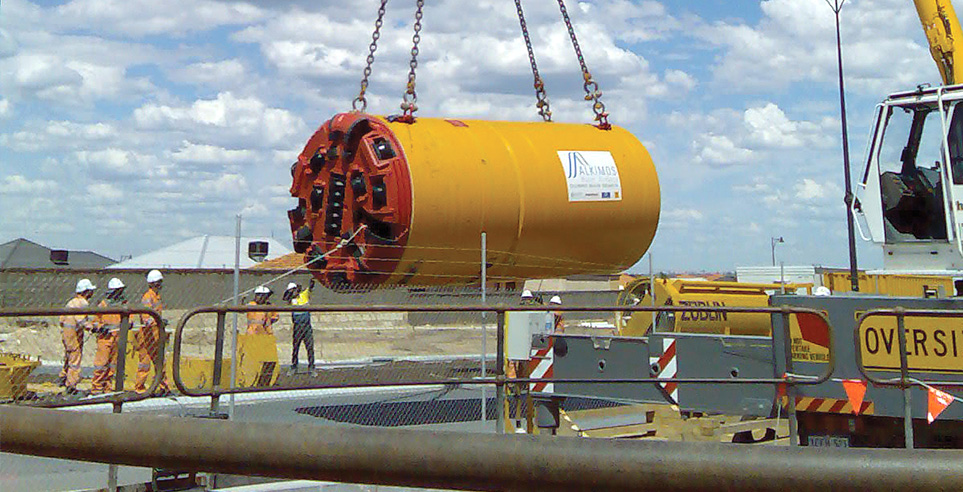Project Description
The Quinns Main Sewer is part of a $150-million suite of civil engineering projects being delivered through an Alliance contract with the Water Corporation of Western Australia. The project involves tunnelling a 4.8 km section of sewer to connect the existing Quinns Main Sewer to the proposed Alkimos Wastewater Treatment Plant, which is under construction and due to be operating by 2010. Work began in February 2007 with tunnelling beginning in February 2008. Alliance partner, Züblin, is primarily responsible for the tunnelling work, which uses a specialised Tunnel Boring Machine (TBM) that employs pipe jacking technology.
The project is located on the coastal plain in the northern suburbs about 45km from Perth (the capital city of Western Australia). The regional geology consists of sandy overburden, derived from the underlying layer of Tamale Limestone bedrock. Ground conditions along the sewer alignment are highly variable; full face medium-dense sand, a mixed face of sand and siliceous calcarenite of varying strength to a full face of high strength calcarenite/siliceous calcarenite. In the sandy strata, limestone pinnacles of varying strength and diameter are typical in the areas where the Tamale Limestone formations are encountered. Solution cavities are also likely to be found and the rock strength is highly variable, ranging from 1Mpa to 80Mpa.
These conditions are readily catered for with various tunnelling methods. However, the highly variable nature, which causes the machine to traverse extremes of each condition, complicates the constructability and tunnelling methodology, as well as increasing the inherent risks. Because of the changing soil conditions within one drive, it is impossible to use only one type of machine. A pipe jacking machine was required that could operate both in Earth Balance Pressure (EPB) and Slurry Mode.
The choice was made to use a nominal 2000mm diameter Dual Mode Pipe Jacking Machine. The concept of this was developed by Züblin and Herrenknecht engineers. The Dual Mode Pipe Jacking Machines were successfully used by Züblin in highly variable ground conditions on sites in Singapore and India.
The main features of the 15m-long TBM include, a bidirectional cutting head with a maximum torque of 800kNm, an integrated stone crusher, a built-in air lock, and a telescopic station with a stroke of 1000mm and a capacity of 6800kN.
There will be 10 jacking/receiving shafts along the 4.8 km long new section of the Quinns Main Sewer with a maximum depth of 20m. In soft ground, shaft sinking is done using concrete caissons with an internal diameter of 8.80m. Rock shafts are constructed using drill and blast; and they receive a shotcrete lining. The jacking pipes used in this project are designed by Züblin and produced in its factory in Thailand. The pipes fulfill all requirements of EU/DIN and Australian standards.
The pipes are designed for jacking forces of 8100kN, have an outside diameter of 2450mm, and an internal diameter of 2000mm. The length of a standard vertically wet-cast pipe is 3000mm. The pipes are 360° lined with 2.5mm thick HDPE liner as corrosion protection against the aggressive gases in the sewer. A cast-in stainless steel collar acts as a guide and, together with a rubber seal seated on a recess, provides a water tight joint connection. The lengths of the drives vary between 270m and 610m.
Pipe jacking started in the middle of February 2008 and approximately 1600 m of tunnel has been completed to the end of July 2008 with a maximum performance of 60 m per day (24 hour operation). The sewer is designed for a life span of 100 years.


